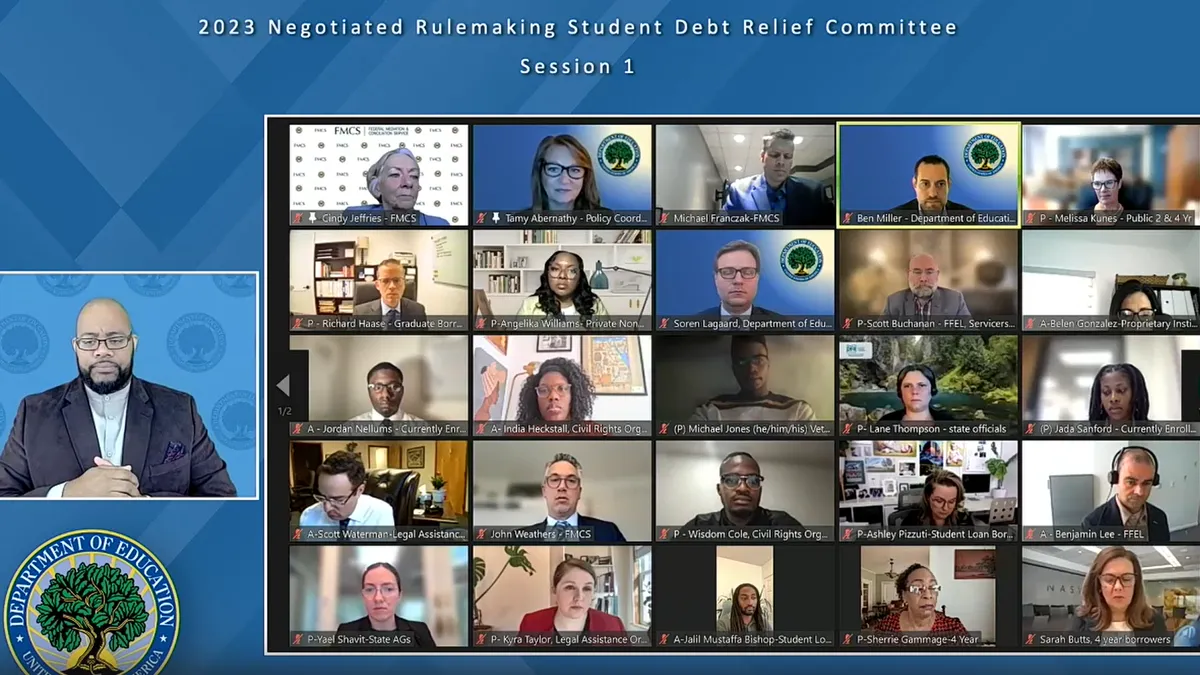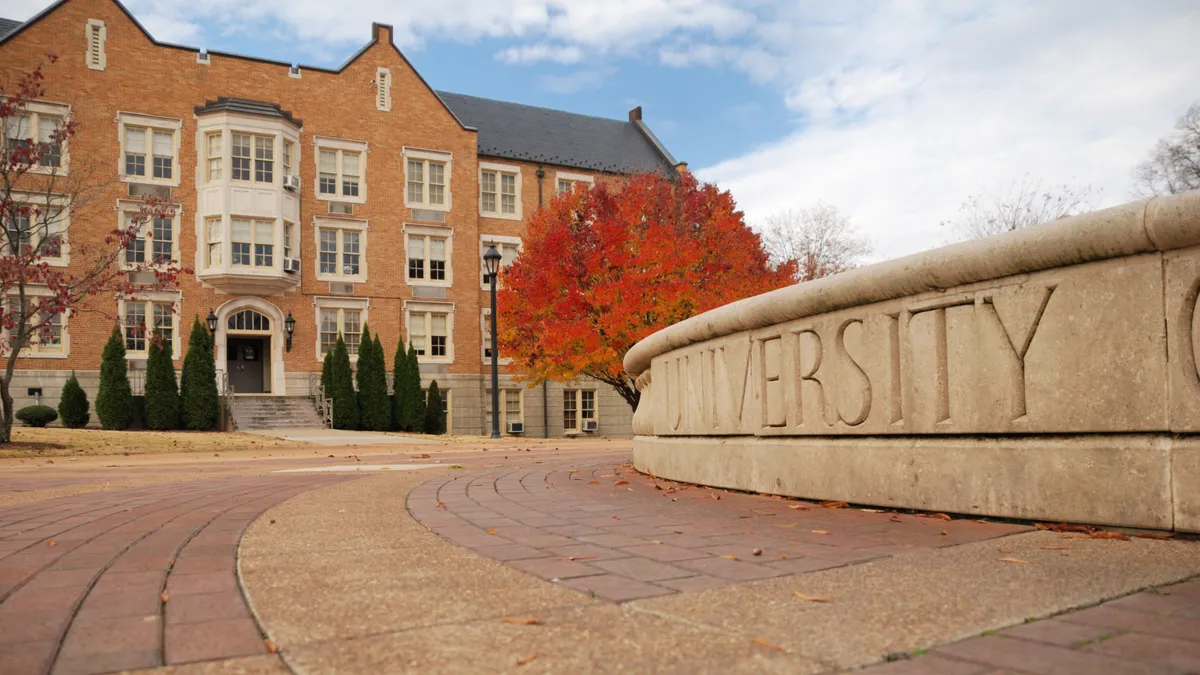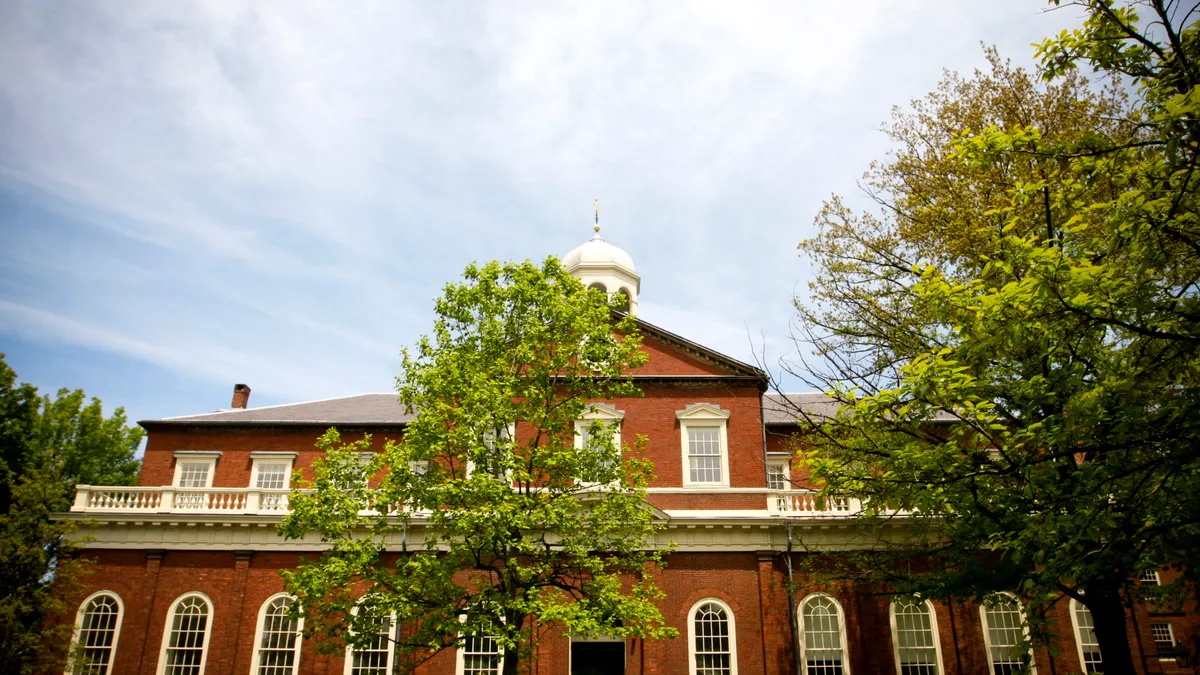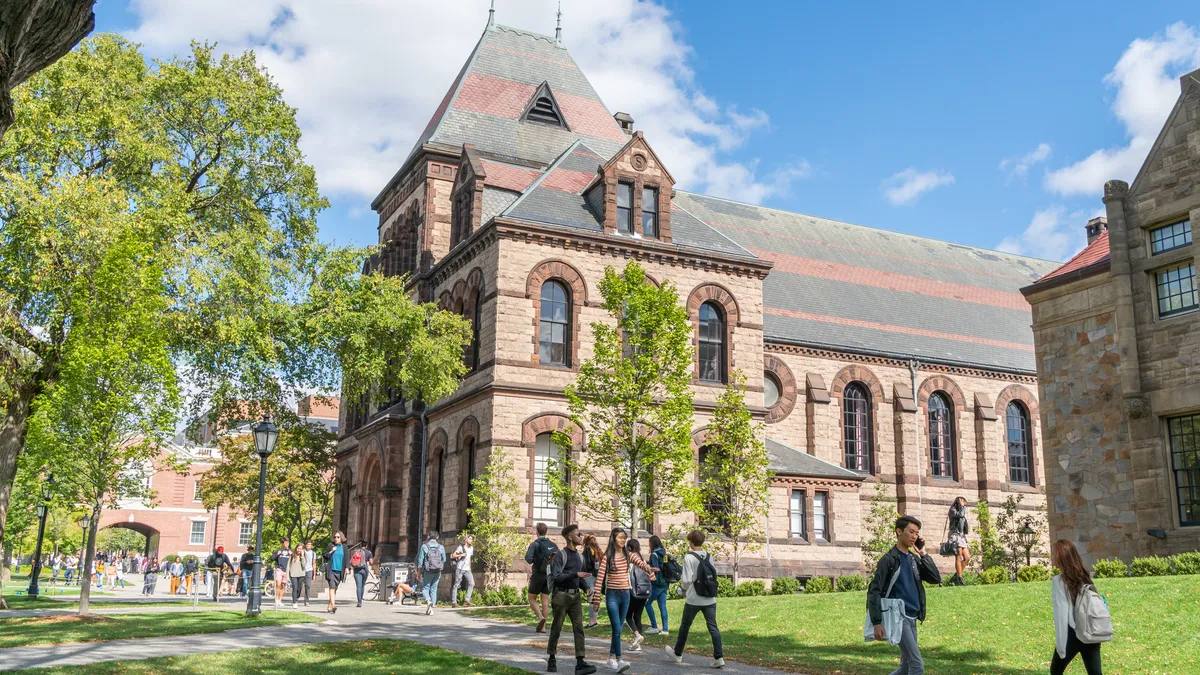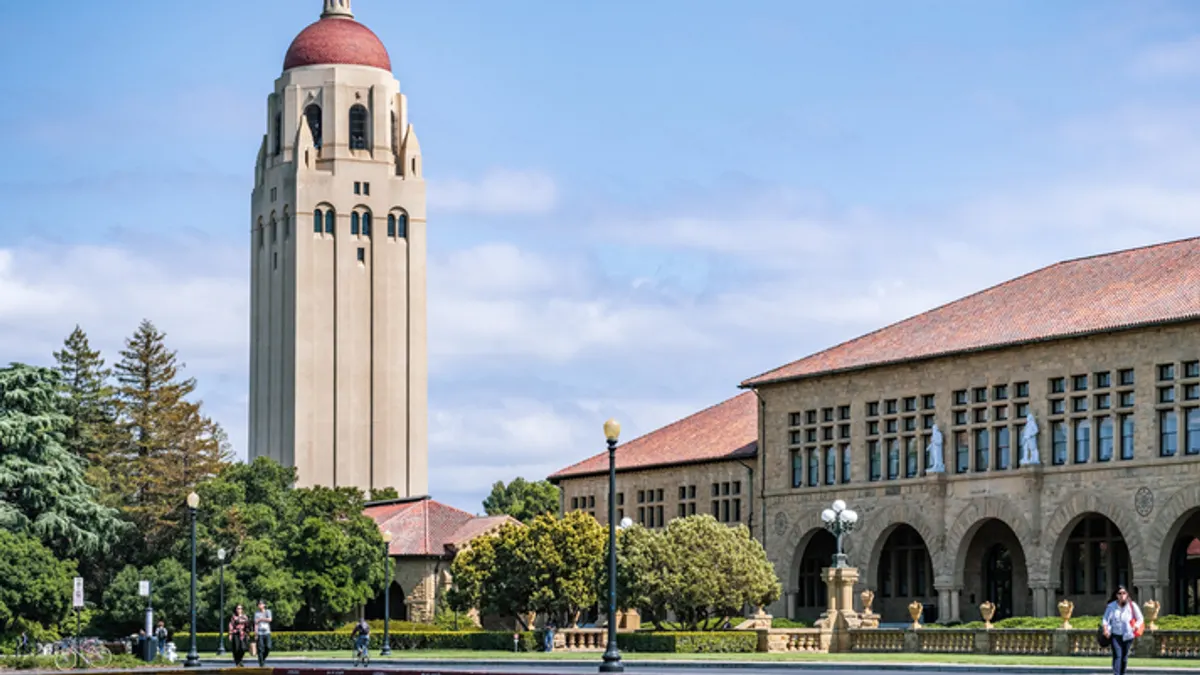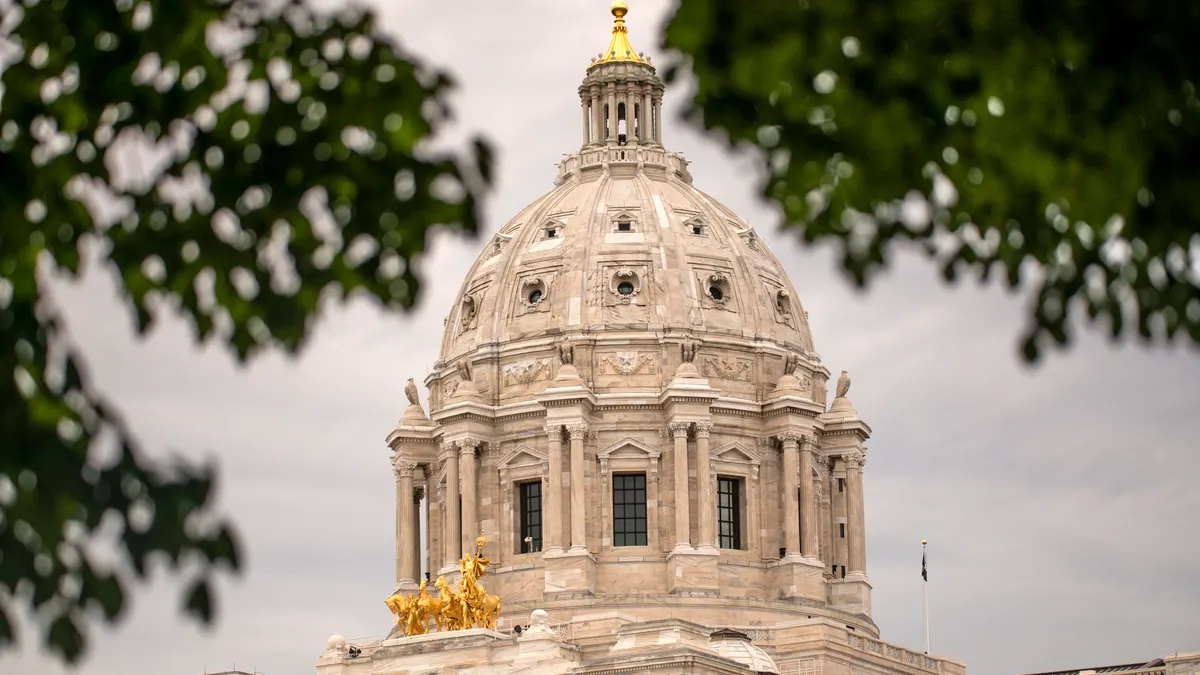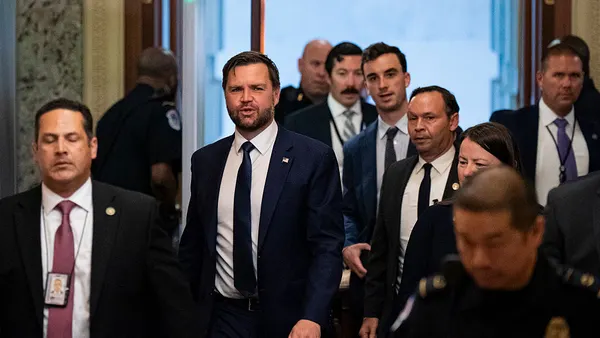The Biden administration kicked off its second attempt at canceling mass amounts of student loan debt Tuesday — this time with a protracted regulatory process. But the method could ultimately run into similar kind of legal troubles that led to the demise of the initial forgiveness plan in the U.S. Supreme Court.
The U.S. Department of Education is engaging in negotiated rulemaking, which brings in a committee of industry professionals to hash out policy details — in this case, loan cancellation.
These committee members, who met for the first time Tuesday, represent different factions of higher education, and must all agree on regulatory language. If committee members can’t find consensus, the Education Department can write a rule how it sees fit.
A new venture
Unlike in its original loan forgiveness program, the Biden administration hasn’t identified a precise debt amount it wants to wipe away through regulation. The first iteration of its plan would have dropped up to $20,000 in student loan debt for individuals earning under $125,000 a year.
Instead, the negotiated rulemaking group will consider the extent of the Education Department’s power to lessen or cancel borrowers’ debt burdens under the Higher Education Act, the main vehicle of federal postsecondary ed policy.
Education Department officials have so far signaled their priority is particularly vulnerable borrowers, such as those whose loan balances now eclipse their original value.
Regardless of the negotiated rulemaking's outcome, it’s a far lengthier process than President Joe Biden’s original plan. It can stretch months, by which point Biden might not even be in office.
Case in point, the committee’s two-hour morning session Tuesday, and a bit of its afternoon session, were devoted to introducing its members and explaining how negotiations will work.
The day began with remarks from James Kvaal, the Education Department’s top higher ed official, who extolled the benefits of developing regulation “from a diverse range of viewpoints.” Kvaal did not participate in the rest of the committee’s meeting.
“These are complex issues,” Kvaal said. “When questions like operational feasibility or legal authority arise, we may not be able to answer them in real time. But we will carefully consider the ideas we hear, do our best to respond in a timely manner and negotiate in good faith.”
The committee’s work
The 16-member committee agreed on a couple of items shortly after introductions, including bringing in two new participants — one representing borrowers with disabilities and another who advocates for consumer rights. The panel declined to add a member who would have represented middle-income borrowers.
The group also voted to stretch the public comment portion of its meetings from 30 minutes to 60 minutes.
Only one committee member initially objected to the extension: Kathleen Dwyer, vice president of operations and regulatory affairs at Galen College of Nursing, who represents proprietary institutions.
Dwyer said the Education Department already had the expertise it needed with the committee members. But she later dropped her resistance.
Discussion in the afternoon turned to alleviating borrowers’ debt loads and making it easier for them to understand the federal financial aid system. Committee members voiced concerns about burdensome interest, specifically when borrowers can’t pay off their loans because it keeps growing.
A couple of members threw out ideas to address this concern.
Melissa Kunes, assistant vice president for enrollment management and executive director for student aid at Pennsylvania State University, asked whether the federal government could forgive the interest that borrowers accrued, leaving just the principal loan amount to be paid off.
And Lane Thompson, student loan ombuds at the Oregon Department of Consumer and Business Services, suggested the Education Department could change policy so borrowers wouldn’t have to pay off more than 200% of what they borrowed.
Committee members were instructed not to talk about existing loan discharge programs, such as public service loan forgiveness, or PSLF, which wipes away debt for government and nonprofit workers after a decade of qualifying payments.
Other loan forgiveness efforts
The Biden administration has tried to remedy administrative problems with PSLF, as well as with income-driven repayment plans, which base borrowers’ monthly payments on their salary. Before Biden took office, the federal government had not adequately tracked these initiatives, leading some borrowers to be stymied in seeking forgiveness.
The White House has forgiven student loans piecemeal style under these programs, including earlier this month when it wiped out $9 billion.
Biden’s initial plan, which would have benefited about 43 million borrowers, relied on a reading of the Heroes Act, a 2003 law that gives the education secretary power to rework the federal student loan program in times of emergency, like war, and circumvent the traditional regulatory or legislative processes.
The Supreme Court held that the executive wing had exceeded its authority in waiving the loan debt. Legal pundits argue the Biden administration will encounter similar lawsuits with its new regulatory venture, saying that courts will find congressional backing is needed to authorize mass loan forgiveness.



